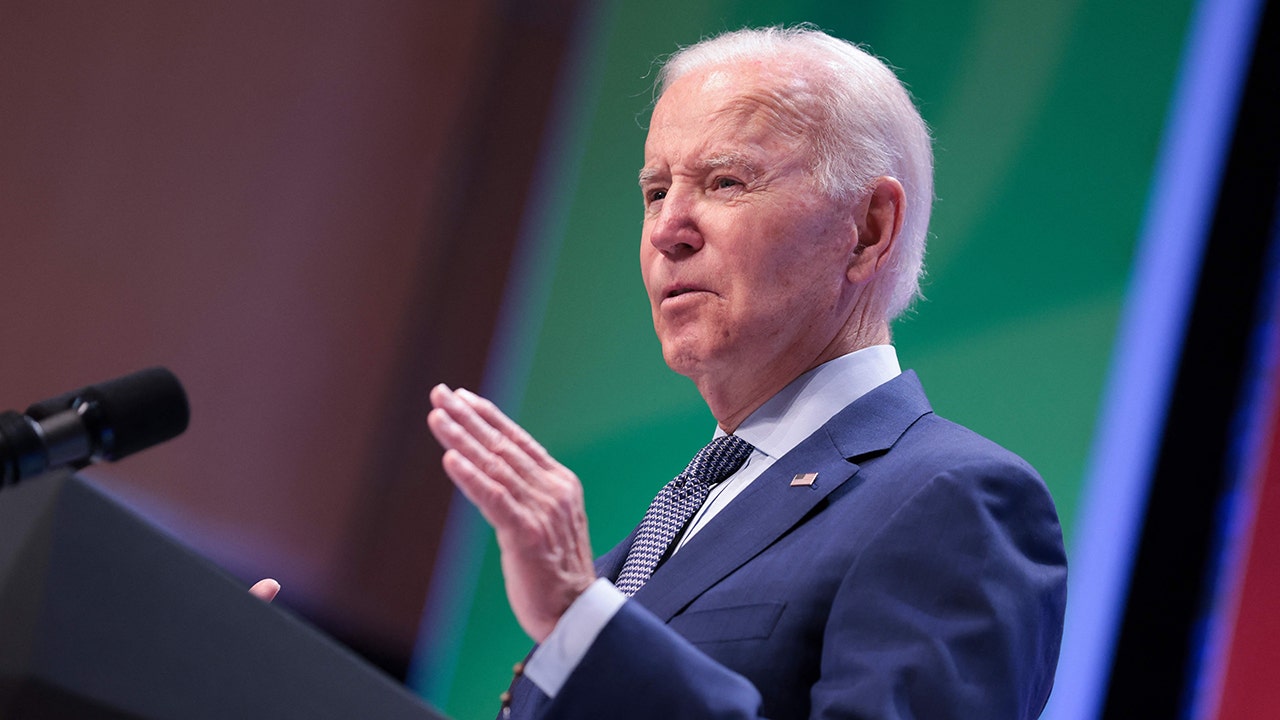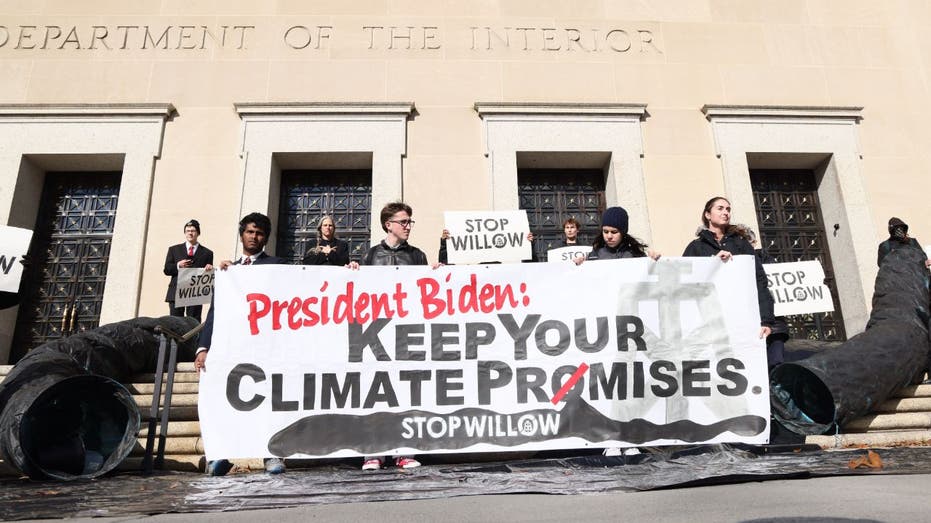
America’s gas bonanza brings Biden new political dilemmas
Last Updated on January 13, 2024 by Admin
[ad_1]
Making Money host Charles Payne breaks down the generational impact Democrats’ climate agenda has had on our culture and economy.
The U.S. has become the world’s top exporter of liquefied natural gas. President Biden is finding that this superpower status comes with its own set of headaches.
In the past two years, hundreds of cargoes loaded with supercooled gas departed the U.S. Gulf Coast as foreign buyers turned to America for energy supplies. Developers of export terminals have seized the momentum to advance plans to build new plants and crank out even more LNG.
Now, climate activists and Democratic lawmakers are exhorting the Biden administration to halt this expansion. They argue that the federal government, which has to approve LNG projects, is failing to account for the harmful effects of gas exports on the climate, the U.S. economy and local communities.
In December, Greenpeace projected images of flares burning excess gas and other images onto government buildings around Washington, D.C.
“President Biden, STOP THE GAS BOOM,” read one projection.
And on Tuesday, national environmental leaders called for a three day sit-in at the Energy Department in February to pressure the Biden administration to pause the approval of new LNG facilities.
The mounting opposition comes as Biden heads into a contentious presidential election, in which fossil-fuel supplies will be a key issue. The candidate has to corral young, climate-concerned voters, some of whom view his track record on the environment as mixed after his administration approved several fossil-fuel projects. He must also reassure foreign allies that the U.S. will remain a reliable provider of the fossil fuels on which they depend.
US President Joe Biden speaks during the White House Conference on Hunger, Nutrition, and Health at the Ronald Reagan Building in Washington, DC, September 28, 2022. (Photo by OLIVER CONTRERAS/AFP via Getty Images / Getty Images)
A White House spokesman said that “President Biden has led and delivered on the most ambitious climate agenda in history.” He pointed to Biden’s signature climate bill and a recent Environmental Protection Agency rule to reduce methane emissions from oil and gas operations, among other measures.
Former President Donald Trump on the campaign trail has pledged to expand U.S. fossil-fuel supplies from day one of his presidency.
“How does the president straddle the fact that the United States is a rising oil-and-gas producer and exporter, against the backdrop of a key constituency that thinks that fossil fuels should be phased out?” said Amy Myers Jaffe, the director of the Energy, Climate Justice and Sustainability Lab at New York University.
BIDEN ADMIN GETS A ‘MIXED RECORD AT BEST’ ON INCREASING DOMESTIC OIL PRODUCTION: SEN. BILL CASSIDY
Biden said during his previous candidacy that he would transition the U.S. away from the oil industry. But he has largely spared natural-gas exporters from regulatory roadblocks, and after the Ukraine war broke out he pledged to provide steady supplies of LNG to the European Union to replace Russian gas.
It is unlikely that the Biden administration will curtail existing natural-gas exports, policy analysts and former regulators said. But the president’s stance on proposed projects is unclear. That creates uncertainty for developers and foreign consumers, said Bernard McNamee, a former commissioner of the Federal Energy Regulatory Commission, also known as FERC.

The Asia Vision LNG carrier ship sits docked at the Cheniere Energy Inc. terminal in this aerial photograph taken over Sabine Pass, Texas, on Wednesday, Feb. 24, 2016. (Photographer: Lindsey Janies/Bloomberg via Getty Images / Getty Images)
The shale boom turned the U.S. into a natural-gas powerhouse. By fracking for subterranean gas, drillers were able to meet American consumers’ needs for the fuel virtually overnight. This prompted developers to build multibillion-dollar plants to refrigerate and load excess gas onto tankers for export. Seven such facilities currently operate in the mainland U.S.—mostly on the Gulf Coast.
Russia’s invasion of Ukraine kicked U.S. exports into overdrive. Since March 2022, U.S. developers have signed 57 supply agreements representing about 73 million metric tons of LNG annually, according to S&P Global Commodity Insights—more than four times the number of contracts they signed between 2020 and 2021.
Many of these contracts run for 20 years and underpin the construction of terminals that have yet to be built. LNG exports are expected to more than double from current levels by the end of this decade, according to the Energy Department.
Energy startup Venture Global LNG alone has signed 16 contracts since the Ukraine war began, half for volumes out of Calcasieu Pass 2, a plant the company wants to erect next to an existing facility in southern Louisiana. When the facility, known as CP2, enters full commercial operations in 2026, Venture Global expects it to churn out up to 28 million metric tons of LNG yearly.
WHITE HOUSE SILENT AS OIL PRODUCTION REACHES RECORD, ENVIRONMENTALISTS CALL FOR GREEN ENERY
“What we’re doing is lowering the cost of energy for the developing world, which saves lives for poor people, and we’re trying to compete with coal to lower emissions,” Venture Global’s Chief Executive Michael Sabel said in November.
But CP2 needs approval from FERC, as well as a license for most exports by the Energy Department. For that reason, it has become a test case for supporters and opponents of the LNG buildup. Greenpeace urged Biden to stop CP2 in its projections onto buildings in Washington last month.
In recent weeks, Venture Global customers EnBW Energie Baden-Wuerttemberg, a German utility, and Japanese power company JERA pressed FERC to greenlight the facility. JERA said U.S. LNG contributed to stable energy security in Japan and globally.
Meanwhile, more than 230 climate groups and others urged Energy Secretary Jennifer Granholm in a December letter to reject CP2, arguing that emissions linked to LNG produced there would equate to 20 times the annual emissions of ConocoPhillips’ Willow oil project in Alaska. They raised concerns about methane leaks during the production of gas and when LNG is shipped on boats. Methane is 86 times more potent than carbon dioxide at trapping the sun’s energy.

WASHINGTON, DC – NOVEMBER 17: Climate activist hold a demonstration to urge President Biden to reject the Willow Project at the US Department of Interior on November 17, 2022 in Washington, DC. (Jemal Countess/Getty Images for Sunrise AU / Getty Images)
The administration approved the Willow drilling venture last year in a decision decried by climate groups. Now, they say, Biden has a chance to prove his climate bona fides.
“If Biden pauses new permits for LNG, the scale of their planned expansion is so great that I think he has a legitimate claim on having done more to undercut dirty energy than any one of his predecessors,” said climate activist and author Bill McKibben.
Critics also say exports push so much gas outside of the U.S. that American consumers will eventually have to pay more for the fuel and point to concerns about emissions from communities living near LNG facilities.
In November, 65 Democratic senators and House members sent a letter to Granholm, demanding that her agency update how it accounts for LNG projects’ impact on climate, environmental justice and domestic energy prices.
GET FOX BUSINESS ON THE GO BY CLICKING HERE
An Energy Department spokeswoman said that the agency was continuously considering evolving energy security and economic, environmental and other factors in evaluating applications for natural gas exports.
For now, some of the largest foreign buyers of American LNG said that they would continue procuring the gas.
“What’s certain is that in the current geopolitical environment, we’re counting a lot on American gas,” said Olivier Becht, France’s minister delegate for foreign trade.
[ad_2]
Source link




